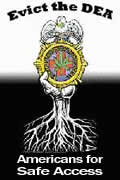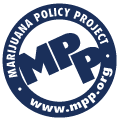|
We Update Daily!
 Custom Search Custom Search
Chris S. Kenoyer. Owner
MMJ Patient, Medical Activist, Online Patients Advocate,
Online MMJ News Journalist
My Personal Medical Bio
Follow Us Now On Twitter
@MedicalMMJMan
Or Follow Us Now
On Facebook
Email Us Here
olpwebs@yahoo.com
Or Email Us Securely Here
MedicalMMJMan@countermail.com
NEW 100% Encrypted Email Server
OLP’s Free MMJ News EList
Get The Latest In MMJ News
All Press Contact Info For Us!
Is CBD? A Possible Cure For
Breast Cancer..? And All The Other
Many Forms & Types Of Cancer..?
Learn More About " CBD" Here
***************************
Advertise Here On OnlinePot
Rates As Low As $50 a Year
24/7 – 365 Days A Year Of Sales!
***********************************
Website Navigational Links
Main Start Page 2
**************************
Latest Marijuana News Reports
*********************************
Parody’s Cartoons US
Government Grown Pot,
Term Papers, School
Reports, & Thesis’s On
Marijuana & Cannabis
*********************************
Amsterdam A to Z
********************************
Canadian Marijuana Websites
*******************************
Church’s & Pot Cannabis
*****************************
Co-Ops, Clinics, Dispensary’s
*****************************
Marijuana Doctors & Clinics
****************************
Pot Cooking Recipes
****************************
Drug Testing A To Z
***************************
Pot Games
****************************
Pot Songs Video’s
****************************
100’s Of Grow Guides
***************************
Hash A- Z
***************************
Cannabis Legal Info, Drug
Lawyers, State, Federal Laws,
State & Supreme Court Rulings
**********************
POW’s Of The MMJ War!
*****************************
Other Marijuana Websites
Websites Link Exchange!
****************************
Medical Marijuana Studies,
Research Report’s, Medical
Cannabis Clinic Study’s
****************************
Parody’s & Cartoons
When We All Need A Good Laugh!
****************************
Avoiding Online MOM Scammers
Newly Re-Updated Info!
*****************************
The Politics Of Contraband
Medical Marijuana In The Mail?
******************************
The Hall Of Shame Section
The Online MOM Scammers
*****************************
Online MOM Providers Ads
****************************
Politicians & Voters Rights
****************************
Medical Marijuana, Strains
****************************
The OG Marijuana Strain Guide
****************************
800+ FAQ Growing Questions
****************************
Patients Spiritual Guidance,
Free Online Crisis Help Center
****************************
Online Marijuana Seed Banks
****************************
Maximum Security Section
Just Updated!
*****************************
Traveling Tips, Guides, B & B’s
****************************
Vaporizers A To Z
*****************************
Online Pot Video’s & Movies
**********************************************
Please Visit Our Sister Websites!
Maine Patients Coalition.org
Reefer Madness Teaching
Museum.org
Listen Right Here Online!
To Original 1930-1950’s
Reefer Madness Propaganda
Radio Shows And Programs
Before TV There Were
"Radio Stars"



*********************************
Legal Disclaimer
Guest Book
Translate Text or Web Page Go To:
Language Tools Google Translations
Article Submissions & News
Reports Are Always Gladly
Accepted Here.

1999-2013 Copyright ©
All Rights Reserved.
No part of this site maybe used or
reproduced in whole or in part
without the written consent of the
Copyright Owner
www.onlinepot.org
OnlinePot assumes no legal liability for any products, or information or
news posted, services offered, Or
any contests or give away’s offered.
|
|
The Addict and the Law By Alfred R. Lindesmith
The Introduction To The Addict And The Law
Washington Post, 1961
Introduction | 1 | 2 | 3 | 4 | 5 | 6 | 7 | 8 | 9 | 10
Advertise Your Business or Products Here
Introduction
SINCE 1935, when I first became concerned with drug addiction, there has been an enormous shift in public attitudes toward the problem. During the 1930’s the police conception of addiction relatively rarely challenged and there was little research activity on matters that pertained to policy. What research there was, was handled mainly by the Public Health Service. Few persons had at that time ever heard that British and European programs were any different from ours, and the idea that addicts might be permitted to have access to legal drugs was usually viewed as a startling, radical, or dangerous doctrine. There were, of course, always dissident voices, usually from the medical, and much more rarely from the legal profession. The Federal Bureau of Narcotics felt, at that time, that it had both the drug problem and critics of the Bureau’s policies under reasonably effective control. The number of addicts was said to be diminishing steadily, dope rings were being broken up with satisfactory regularity, and there were few complaints about excessive leniency on the part of judges.
With the advent of World War II indices of narcotics activities
The postwar period has been one of bitter controversy as established ways of viewing addiction and handling addicts have been increasingly questioned and sharply challenged on the basis of enlarged experience, increased knowledge, and new conceptions of the problem. The usual spontaneous reaction of ordinary people and of legislators to a deteriorating crime situation is to call for increased punishment. This occurred -with respect to narcotics in the United States, with the result that from about 1950 into the 1 960’s penalties for narcotics offenses at both federal and state levels were increased to an extraordinary extent. These increases were ordinarily asked for by the police and passed by huge majorities in most legislatures. This was generally applauded by the press.
At the same time that penalties were being increased, a dissident movement began to gather strength and to raise fundamental questions challenging the basic conceptions of the program. In increasing numbers, Americans, traveling to Great Britain and other countries where addicts are handled as patients rather than criminals, returned to write articles and books. Comparisons began to be made between alcoholics and opiate addicts; leading magazines and newspapers criticized the police conception of the addict; the image of the addict in television programs and stage productions became that of an unfortunate victim to be pitied and helped rather than prosecuted and imprisoned.
With the calling of a White House Conference in 1961 and the appointment of a new head of the Federal Bureau of Narcotics, the reform movement reached a peak of hope and optimism. For the first time it appeared that legislators might be willing to con
This book is designed to contribute to the discussion of issues which are presently being debated, by presenting relevant materials of both an historical and a current nature. Some of these materials are discussed in other current writings but others are not. Limitations of space and competence dictated that many matters be omitted, the most conspicuous among these being international efforts to control narcotics at the source by limiting production. In general, the topics that are covered are those which bear most directly on the control of narcotics within the nation.
It is taken for granted that the reader is in a general way acquainted with the nature of addiction from his own previous reading and from the mass media. Nevertheless, it may be desirable to emphasize 2 number of points which will assist in understanding the basic orientation of the present work.
We are concerned in this book primarily with addiction to opiate drugs and their equivalents. These drugs are so completely different from such substances as marihuana and cocaine that they cannot intelligently be discussed together with them. A chapter on marihuana is included to make this point and to indicate the consequences that have followed from the fact that our lawmakers have failed to make this elementary distinction. While the use of marihuana is illegal, the use of alcohol is not, even though alcohol produces physical dependence and is addicting in the same sense that heroin is, while marihuana is not an addicting drug. The reader might well ponder what the effects would be if alcohol were handled as heroin is and if all alcoholics were subjected to the treatment accorded opiate addicts. He should also consider how far he would like to have his government authorized to interfere with the obnoxious or undesirable personal habits of its citizens and where the line ought to be drawn dividing matters of public concern from those that are merely personal. How, for example, should cigarette smoking be dealt with’ ? Or barbiturate addiction’ Or the excessive use of tranquilizers and amphetamines?
In forming an opinion on matters like these, one should keep in mind what the essential general features of the Opiate addict’s behavior are. After a period of initial use, when physical dependence is established, the addict appears to use drugs primarily to avoid the unpleasant reaction which occurs when he stops. When taking regular quantities of drugs the ordinary addict seems to be relatively normal and reports that he feels approximately so. Researchers who establish physical dependence in lower animals such as rats and monkeys customarily observe that these animals also seem normal under the effects of their usual doses and become miserable and disturbed only when these cease. It is not possible to determine reliably by casual observation whether a given person is or is not under the influence of heroin.
The relative normality of the heroin or morphine addict contrasts sh arply with the state of the alcoholic, the barbiturate addict, or persons under the influence of marihuana. While the opiate addict suffers more than his share of physical disease and minor troubles such as constipation, lack Of sexual desire, and tooth decay, there is no known major tissue pathology associated with heroin and morphine addiction as there is with the abuse of alcohol. Some addicts manage to escape many or all of the above difficulties, and some live to an advanced age. For example, the grandfather of an Indian graduate student in Indiana University has been using opiates since he was about twenty and is now more than ninety years old. There are many examples of drug addicts who have continued to engage in productive work and who have even had positions of eminence while they were using drugs.
Opiate-type drugs do not directly incite to crime or to irresponsible behavior as alcohol does, for example. They have 2 sedative, tranquilizing effect and if all other things were held equal would probably inhibit rather than encourage crime. The crimes of drug users are overwhelmingly crimes against property committed to secure the means of obtaining drugs. Some addicts are criminals first and drug addicts second, and others are criminals primarily because they are addicts. Both types must, in the United States, almost necessarily raise money by illegal means when they use drugs.
When reference is made to opiates and opiate-type drugs, the main substances that are called to mind are opium and the “manufactured drugs” morphine and heroin. The species of poppy known as Papaver somniferum produces raw opium from which the “prepared opium” used by smokers is made in a boiling down process. In the first decade of the nineteenth century a German chemist, William A. Serturner discovered morphine, the first of the opiate alkaloids, in opium. Shortly thereafter other alkaloids were found and in 1898 another German scientist named H. Dreser produced, by chemical treatment of morphine, a substance technically known as diacetylmorphine and popularly as heroin. During World War 11, wholly synthetic opiate-equivalents which are addicting and may be substituted for heroin or morphine were discovered. The most widely known of these are demerol (pethidine or meperidine) and methadone (dolophine or amidone). There are so many opiate alkaloids, synthetic equivalents and derivatives that it is a formidable task merely to list them. Most are unknown to addicts and can be ignored here. A few of the more familiar ones are codeine, eucodal, Dilaudids, dicodide, and percodan.
Controversies concerning the nature and causes Of addiction are less violent than those connected with policy but they are more confusing and more varied. There is a strong general tendency for each discipline that is involved in the varied aspects of addiction to promote its own views and interests at the expense of those of other disciplines. Pharmacologists tend to have pharmacological theories of addiction, psychoanalysts promote Freudian theories, Sociologists advance sociological views, and so on, with the persons in each field unconvinced by evidence from the others. It is neither possible nor appropriate to enter into a discussion of the varied and complex theoretical issues which drug addiction raises other than to indicate that the cliches in the popular literature which purport to explain addiction are generally worthless, although frequently repeated with assurances that they are the products of impeccable research and agreed upon by all experts, or at least by all that count.
Serious shortcomings of the current literature on addiction are that it tends to be time-bound and culture-bound. The contemporary young, urban, male heroin addict tends to be taken as the prototype of addicts in general, and attention is too exclusively focused on the pattern of addiction which is now found in our metropolitan slums. It should be remembered that opium has a very long history that extends back beyond the first written records, and that it has been used in a bewildering variety of social contexts for multitudinous motives by persons of many diff erent types from all social strata. The intravenous use of heroin dates from near the beginning of the twentieth century, hypodermic use of morphine began in the middle of the preceding century, and opium smoking was taken up during the sixteenth century. For several thousand years before that, opium was consumed in liquid form or eaten. For about two thousand years it was the prime therapeutic agent in Western medical practice and was employed by physicians to treat or cure almost all the ills of the flesh and of the mind. When morphine was discovered, it was used to treat and cure opium addiction, just as heroin was subsequently recommended as a cure for morphine addiction, and as morphine was used to cure alcoholism.
I have not attempted the impossible task of concealing from the reader my own feelings, preferences, and biases. Instead, I have stated them as frankly and fully as possible under the circumstances, so that readers might be warned and make allowances for them. At the same time I have tried to present available evidence and lines of reasoning in such a way that the interested reader can judge them for himself and, if he wishes, go to the sources that are indicated to check the evidence for himself or to consult opposing opinions and interpretations.
Introduction | 1 | 2 | 3 | 4 | 5 | 6 | 7 | 8 | 9 | 10
|






 Button Ads!
Button Ads! 






